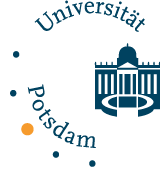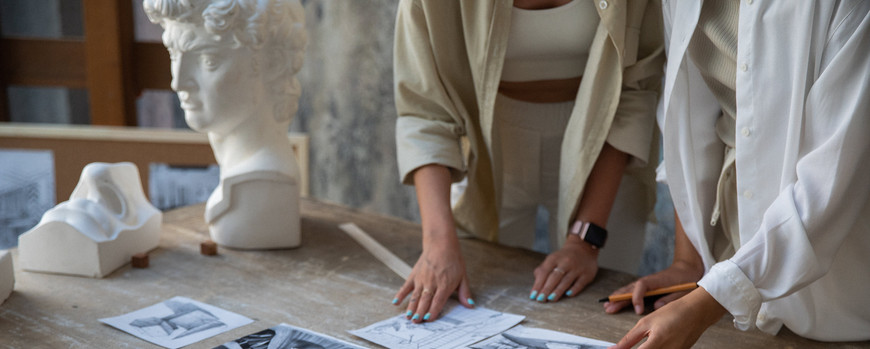Blog #31 Cultural Arts Education and Personality Development
Can cultural arts education help educate capable citizens?
Our perspectives, preferences, and needs have shifted. Current generations are tasked with dealing with major challenges such as the continuing destruction of our planet, health crises, global injustice, and the disruption of the long-prevailing belief in security as given. The last decade has shaken our existence with increasingly perceptible impacts of climate change, a global pandemic unparalleled for over 100 years and the outbreak of a cruel war in the midst of Europe. All these challenges of an ever more complex and ambiguous world require flexibility and the necessary skills to adapt to a changing environment. We need citizens ready to take on the new world for whom these new circumstances will be the new normal. In a nutshell: We need capable and adaptable citizens!
Well, this is obviously easier said than done. What do we need to prepare future generations for the challenges which we cause today? In order to raise a generation capable of dealing with said challenges, we will have to start early. The key word is education.
Cobisiero-Drakos et al. (2021) denote the skills necessary to pertain in our modern world as “21st century skills” (p. 2). As such, they understand creativity, critical thinking, collaboration, and communication to be enhancing through the implementation of arts education aspects in teachers’ education (ibid., pp. 2-7). Through the promotion of arts-based collaborations among teaching personnel and practitioners, pupils’ “competitive social and economic progress in the future” (ibid., p. 4) is said to be ensured as shown in their study conducted in New York schools (ibid., p. 6). But not only personal skills can be enhanced through arts integration, as the researchers found: They were also able to prove significant positive effects on the overall community structure. Via the effective implementation of cultural arts skills, the studied pupils were able to “bond with their peers” (ibid., p. 4) from different socioeconomic and cultural backgrounds, expand their perspectives and explore new collaborative study methods, enhance their confidence, and experience the advantages of a community and the formation of alliances. These skills are not to be applied individually but are intertwined and stretch over the entirety of academic subjects in which they find use (ibid., p. 3-10).
The effectiveness of implementing cultural or arts education in secondary school curricula has also been researched by a group of British researchers. They found that pupils improved on almost every level of personal development (Harland et al., 2000, pp. 26-227). Specifically, the scientists investigated the effects of cultural arts education on intrinsic developments, arts knowledge and skills, social and cultural knowledge, creativity and thinking skills, communication and expressive skills, personal and social development, as well as positive transfer effects on others. Moreover, their research confirmed the positive effects on community effects such as the school, the community, and a general enrichment through the arts (ibid., pp. 23-24, 237-252).
However, the value of cultural arts education cannot only be understood in its capacity to form competent citizens. Broad access to cultural arts education is furthermore pivotal to ensure equal opportunities irrespective of one’s sociocultural background. A study by Massek, Miller and Josting (2021) is based on this assumption. The researchers investigated the significance on an implementation of cultural arts in teachers’ education. They understand access to cultural arts education as a human right with a significant impact not only on personality development but also as a helpful predictive tool for societal and global participation. This corresponds to the researchers’ ethnological and sociological cultural concepts according to which culture represents a way of life or rather the pursuit of certain norms and values in one’s personal life and external behaviour (ibid., pp. 197-199).
When applying cultural arts infused curricula, one ought to be careful not to lump together every form of cultural education. Massek, Miller and Josting distinguish between arts education in a rather narrow understanding of cultural arts mostly regarding high culture, literary-aesthetic education which mostly refers to literature didactic, aesthetic education with a focus on the integration of cultural practices into pedagogical methods, and aesthetic education which includes sensory experiences (ibid. 199-203).
Including cultural arts in early years of education enables the development of individual personality traits and allows for a gentle approach to discovering one’s own strengths and abilities. While the sociocultural background is especially influential in the early stages of personality development, institutional cultural offers can ensure equal access to targeted educational offers enabling self-determined lifestyles for all pupils alike. This is particularly fundamental in situations where informal and non-formal forms of cultural arts education are lacking. Therefore, the authors postulate that teachers must be taught awareness, reflection, and the necessary skills to pass this knowledge on as successfully proven in pilot trials at the universities of Bamberg, Bochum and Würzburg (ibid., pp. 204-207).
Overall, we can conclude that newer generations are bound to learn skills to adapt to current circumstances which previous generations were far from experiencing. This set of skills can be referred to as 21st century skills. One of the many ways these skills can be taught from an early age is through the implementation of cultural arts in children’s education beyond the traditional subjects such as arts and music, and rather expand over the entire curricula. Experiments have already shown the effectiveness of such measures. Yet only time will tell if the implementation in education will lag behind the current ever-increasing challenges of our time or be able to meet them successfully.
Literature
Cobisiero-Drakos, L., Reeder, L. K., Ricciardi, L., Zacharia, J., Harnett, S. (2021). Arts integration and 21st century skills: A study of learners and teachers. International Journal of Learning & the Arts 22(2), 2-25. https://files.eric.ed.gov/fulltext/EJ1289817.pdf
Harland, J., Kinder, K., Lord, P., Alison, S., Schagen, I., Haynes, J., Cusworth, L., White, R., Paola, R. (2000). Arts Education in Secondary Schools: Effects and Effectiveness. Slough, Berkshire: National Foundation of Educational Research. https://www.nfer.ac.uk/publications/eaj01/eaj01.pdf
Massek, C., Miller, S., Josting, P. (2021). (Literar-)Ästhetisches Lernen und Kulturelle Bildung: Zentrale Begrifflichkeiten und ihre Relevanz für die Lehrer*innenbildung. Herausforderung Lehrer*innenbildung: Zeitschrift zur Konzeption, Gestaltung und Diskussion (HLZ) 4
(1), 196-213. doi.org/10.11576/HLZ-4000
Erstellt von: Malin Nissen

